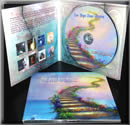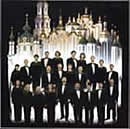Two Steps From Heaven

Classical Crossover

Sacred Choral Music
by Kiev Chamber Choir

Video:
Ukrainian Folk Music
Free Dog Clipart

Classical Crossover

Sacred Choral Music
by Kiev Chamber Choir

Video:
Ukrainian Folk Music
Free Dog Clipart
Russian Orthodox Church Sacred Choral Music on Amazon
ALL ABOUT
AVE MARIA LYRICS
Celine Dion: What Does She Sing?
MOBILE WEBSITE
 DOWNLOAD THIS SONG FOR FREE You won't find this song anywhere on the Internet. CHAPTER 3 : Recording tips from the Pros Move Around the Room Angle Your Amp Play with Mic Placement & Angles Get the Air Moving Focus the Energy Multiple Mics Re-amping. Re-amping Re-amping is a recording technique that can salvage or spruce up tracks recorded in a home studio or less-than-ideal recording environment. It’s also a great way to experiment with sounds and tones without having to constantly re-record a part. You can even totally reinvent a part without compromising the original track. The basic idea is to take a recorded track, send the signal to studio monitors or an amplifier, set up a mic, and record the “re-amped” track. Add Ambience Let’s say you’ve got something on tape, you love the performance, but in playback you’re realizing it’s just a little too dry — it needs a bit of room ambience. You can always go to a digital reverb or delay, but if you want to experiment, or you want a sound that’s just different from the effects in your software or outboard repertoire, re-amping is another option. Play the track through studio monitors and put a mic on the other side of the room, or even a room or two away, and pick up the natural ambience on a new track. Mix that in and you’ve added breadth to the original. If you’re working in a digital environment, you can move that reverb around and control where the ambient track sits in relation to the original track. This can be a particularly handy technique for recording drums in a project studio. Often a home studio environment is not ideal for recording drums - it might be too small a room, or too controlled - which can leave you with a dry and lifeless drum track. In such a case, bring up the kick, snare, and toms in the monitor and put a microphone down a hallway. You’ll capture a splashy, boomy sound that you can’t really get with a digital reverb. Amp Swapping Sometimes you just don’t have the means to capture the guitar sound you have in your head, or the tone you originally recorded just isn’t knocking your socks off, but the performance is killer. Maybe the recorded bass tone doesn’t have the body you need to hold its place in the mix. Re-amping can be your solution to salvage that great performance. Taking a clean guitar track and sending it to an amplifier gives you a lot of room to experiment with tone and effects — and you’re using the actual recorded performance to get your sound, so there are no surprises when you hit the red button. Taking the direct signal recording of a bass track and sending that through an amp provides the same opportunities. The same applies for just about any instrument you can think of — re-amping through a live amplifier is going to give you a number of options not necessarily available at the time you recorded the performance. There aren’t any rules - you’re doing this to get a vibe, create a sound, and capture something special or different. Experimenting can yield some great and unexpected results. |
HOW TO MAKE HOME
|
DOWNLOAD THIS SONG FOR FREE
You won't find this song anywhere on the Internet.
HOW TO MAKE HOME RECORDING STUDIO